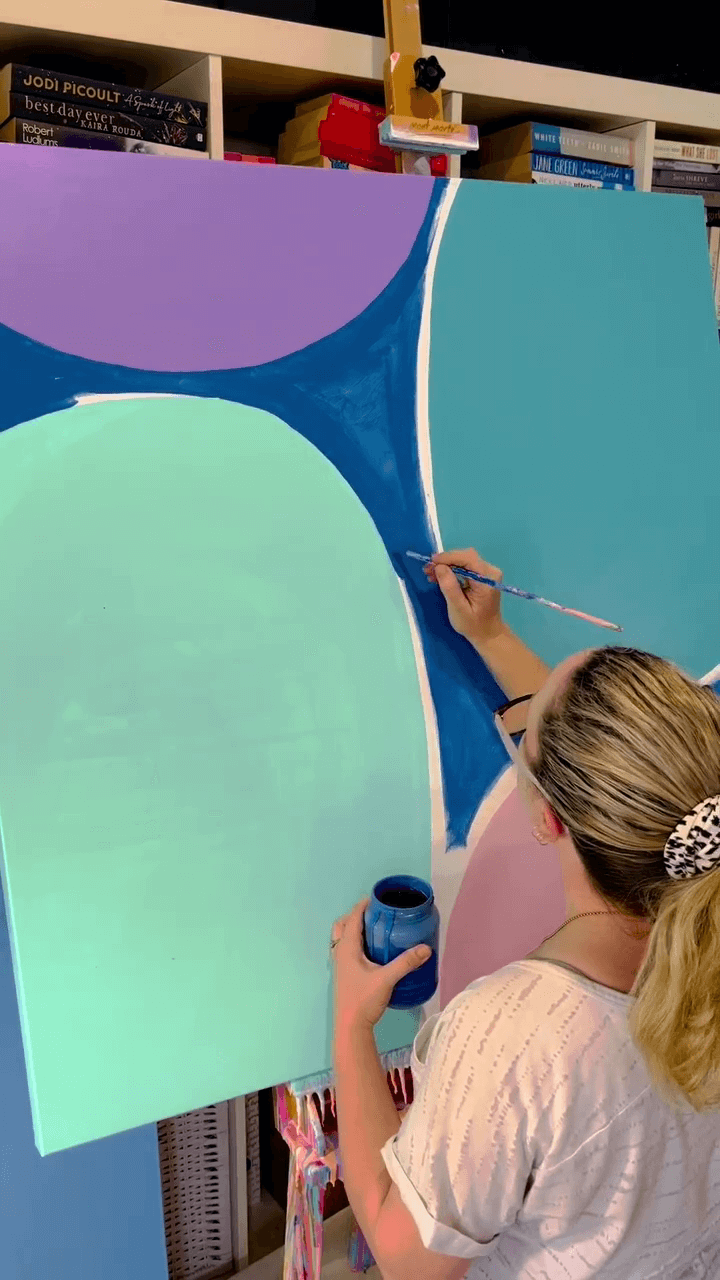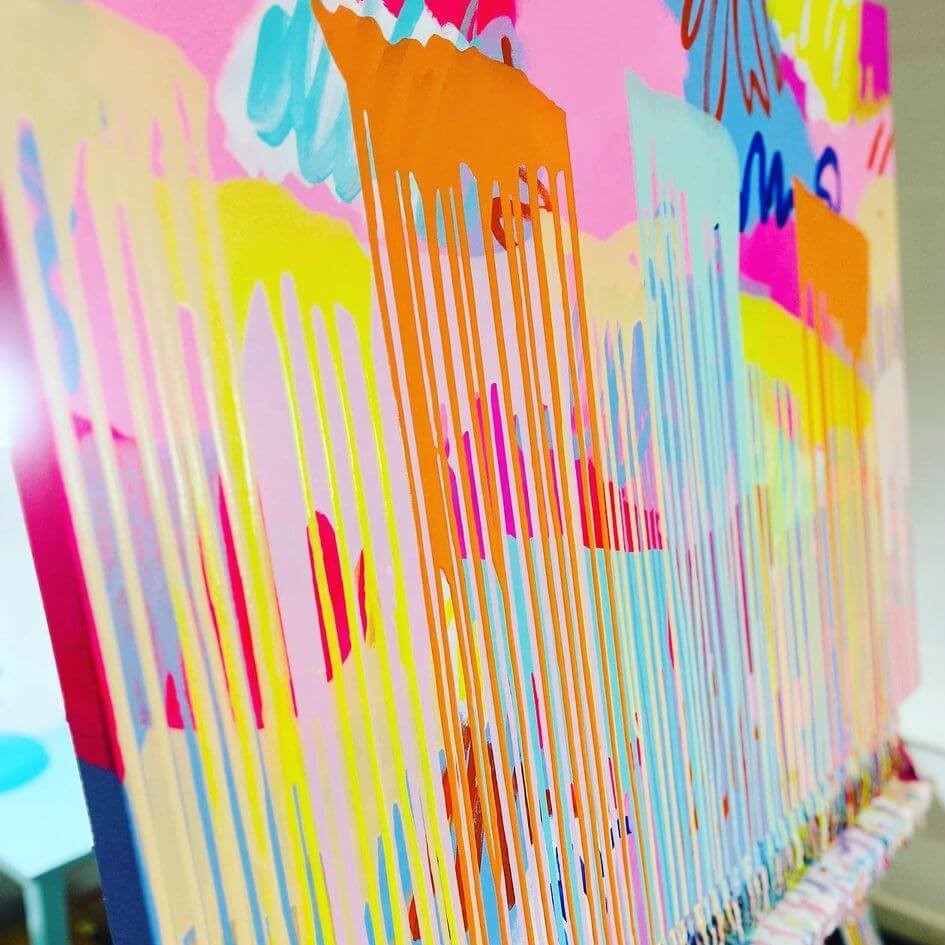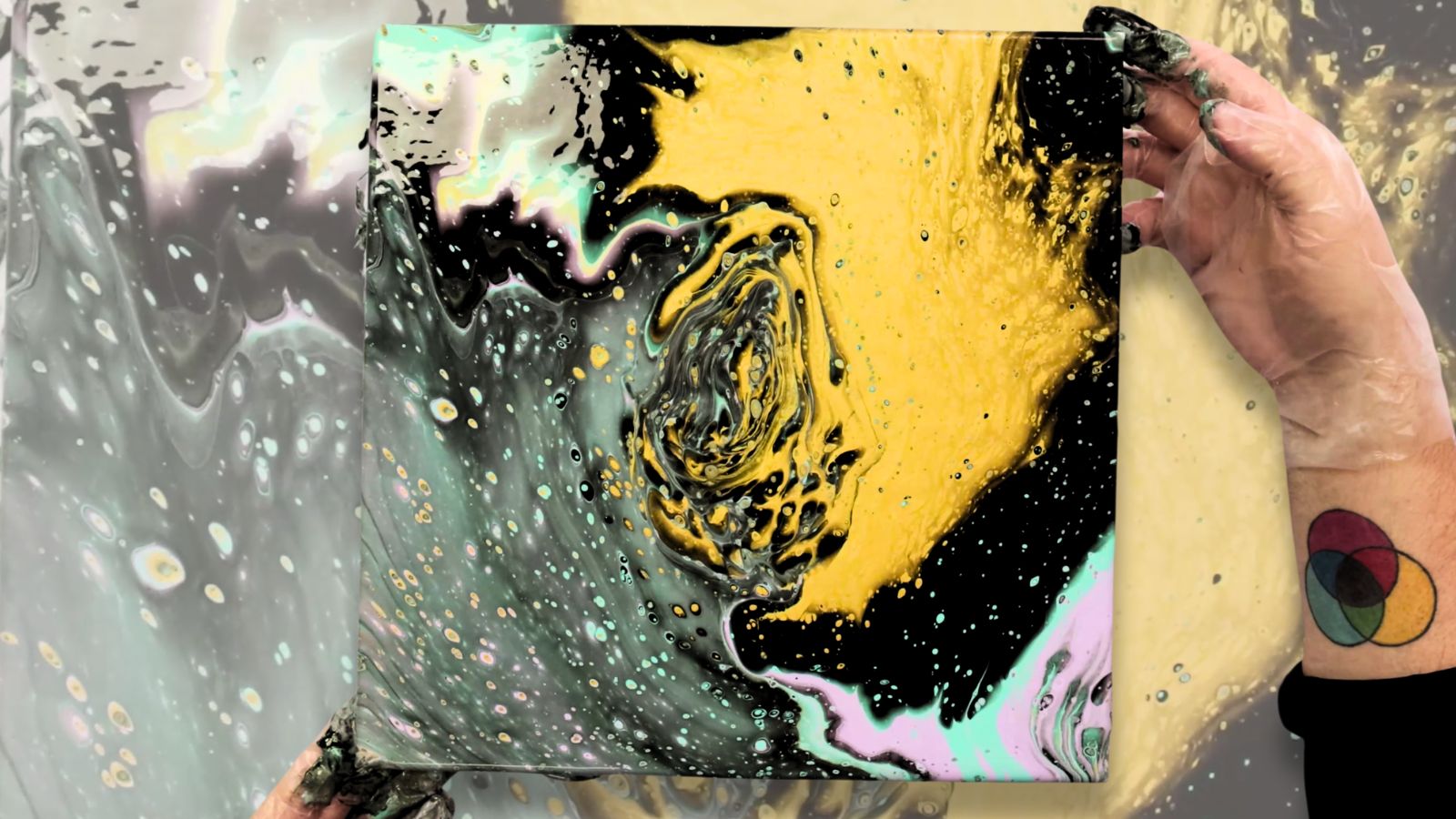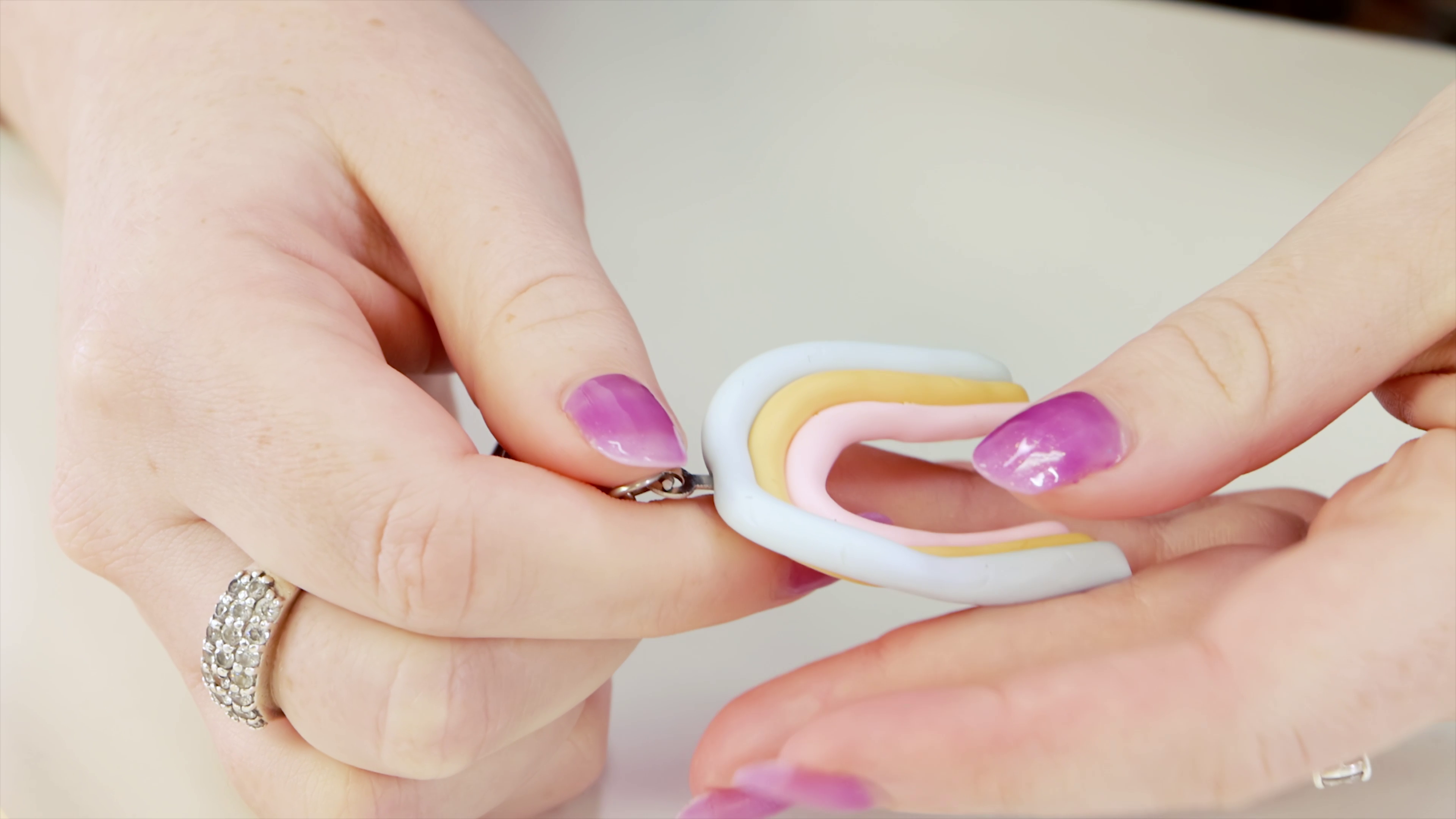Whether you’re starting a new project or you’re looking to pick up a paint brush and dive straight into it, it can be hard knowing where to start when it comes to abstract art. To get you on the right track, we asked Melbourne abstract artist and friend, Poppy Key (@poppykeyart) for her top 10 tips for abstract art.

1. Deciding what to paint can come intuitively
For me, the decision about what to create just comes to me. It’s intuitive and rarely planned. Inspiration just strikes, often when I least expect it. All my paintings start with two things: A colour that I love and a shape that speaks to me. From then, the colour palette just flows, -- depending on that initial colour and the shapes that appear in my mind, which I transfer to the canvas.
2. Don’t be afraid to use more paint than you think you’ll need, a colour wheel can help too
Recently, I’ve started to mix my palette before I start working. I intuitively tend to use the colour wheel in my selection, but I also love to break all the rules and do what feels ‘right’ to me. I always mix more paint than I need so I can go back in and adjust as necessary. Then the left-over paint generally inspires the next work.

3. To prime or not to prime, it depends on what you’re looking for
Sometimes I want a very smooth surface, so I’ll apply gesso and then a layer of white before I even start. Lately though, I’m enjoying the texture of the canvas showing through, so the canvas doesn’t need anything. I just go for it!
4. Use chalk to help plan where to put your shapes
I normally start with making shapes in chalk, which easily rubs off with a baby wipe once I’ve made those first marks. I rarely plan a work on paper. I just dive straight onto the canvas. Then it’s a case of adding and taking away elements that aren’t working for me. My work is very layered and very labour intensive, I may paint and repaint an area several times before I’m happy with it.

5. Pouring paints are great for layering
I use a lot of different products and brands, depending on what I want to achieve. But Mont Marte Acrylic Pouring paints are my go-to. Their Ultramarine Blue, Light Aquamarine and Dusty Pink have to be my top three favourite colours. They go on the canvas so smoothly and also work beautifully for my pouring work. Then, I just add another medium to get my signature drips.
I always start with a background. Sometimes it’s a plain, smooth colour and sometimes I like to keep the texture of the brushstrokes.
6. Good things take time, experiment first
“Happy accidents” and just playing around with no added pressure are essential to growth with abstract art. Taking yourself out of your comfort zone and trying new things that you don’t know if they’re going to work out, are where the magic happens. You can always go back and paint over an area or even a whole canvas that didn’t work out quite as you had hoped. I’ve sold many, many paintings that have been painted over and over before getting somewhere I’m really happy with.

7. Hang your finished work somewhere you can see it, this will help you decide if you’re finished
When I’ve finished and signed a painting, I hang it where I can look at it, live with it and consider it for at least a few days. Then if I’m sure I’m happy with it, I’ll list it for sale.
8. Once your work is sold, add a varnish spray
At this point it’s important that the painting doesn’t get damaged so it can’t be stacked in my studio, it has to go up on the wall. Once it’s sold, I take it down, check it for any marks, clean it with baby wipes and then apply two coats of satin varnish spray. Once that’s dry, I’ll name it and sign it on the reverse before packing and sending.

9. Add a name to your work
Normally the name comes while I’m working. Often, it’s a feeling that the work evokes, sometimes it’s based on colour or shape and sometimes it’s completely random. I’ve always thought of the name before the work is finished. It generally comes really easily to me. I do follow other artists who come up with the craziest names which don’t seem to relate to the work at all. But personally, I think a collector needs to connect with your painting emotionally to choose it for their home, so I believe that names are really important.
10. Anyone can be an artist, growth comes from making mistakes
If you feel the urge to create, just bloody do it!!! What’s the worst that could happen? A wasted canvas? I started my journey during lockdown as a form of meditation and escapism from the chaos of the world and my life. Although I studied art at school, I had no formal painting training. Everything I’ve learnt has been from just trial and error and giving it a red hot go. I’ve spent many, many hours and days learning for myself what works and what doesn’t. And I still make mistakes. All the time. A lot of them. But that’s where the growth comes from. If it feels good and it makes you happy, go for it!

Originally from the UK, Poppy Key is an abstract artist living in Melbourne. Her action-packed pieces are full of contrasting colours and textures. You can find out more about Poppy’s art here or read more about her creative journey here.
We hope Poppy Key’s tips for abstract art inspire you to get creative too. We’d love to see what you come up with, #montmarteart or tag us @montmarteart on Instagram or Facebook, so we can see it!





































